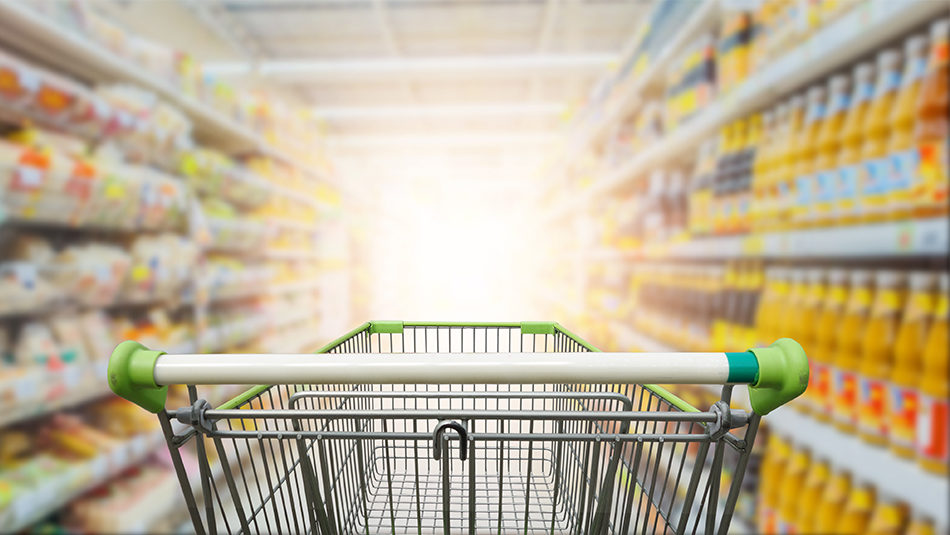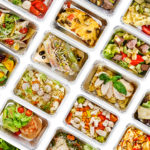
The Future of the Supermarket is Here
Every supermarket chain has a weekly ad meeting where the items and prices for the next week’s circular are decided. When I worked on the Vons ad account (before they were acquired by Safeway) I used to attend these meetings, every Tuesday at 7am. I am not a morning person. At one of these meetings the President of Vons and the head of Produce got into a discussion over the lead produce item for the following week. The Produce guy wanted to repeat the item from the same week the previous year, and the President wanted a new item. All of a sudden the President says, “Let’s ask our ad guy. He knows what consumers want.” All eyes in the room turned to me. “ So what do you think,” continued the President, “do our customers want new things or would they rather have what they are familiar with?” Not being suicidal, I knew I had to find a way to avoid picking one side over the other, or I was going to make an enemy for life. I slithered out of it by saying that the thing about consumers is that they aren’t logical, they want the new and the familiar, even though that may be a crazy contradiction.
Those crazy consumers are the same today. They want the new and the familiar in one package. Consumers want prepared meals, meal kits, and a full-service supermarket when they feel like it but, without having to wait in line. Oh, and they want deals without having to clip coupons (who has time for that nowadays?). And they want the convenience of online ordering and home delivery, or click-and-collect in store pick-up, but they want to be able to select their perishable items the old-fashioned way, as if they were there in store. That’s not logical!
But supermarkets today are gearing up to deliver all that. And more. These transformations were well under way before Amazon bought Whole Foods, but they have really kicked in to high gear since then. Let’s look at some developments that are laying the groundwork for the supermarket of the future.
Will You Be Eating in Today?
The line between grocery store and restaurant continues to blur. Will the supermarket of the future be a ‘grocerant’? Kroger recently opened a restaurant called Kitchen 1883 next to a Kroger Marketplace store, and a second restaurant is not connected to a store at all, but is being used to “discover new ideas that will help shape our future dining concepts and in-store fresh food experience”, according to Daniel Hammer, Kroger’s VP of Culinary Development. Kroger also recently announced that they plan to fill 11,000 new job openings this year, on top of 10,000 in 2017, and 12,000 in 2016. I guess they didn’t get the memo about the death blow Amazon is going to deliver to the traditional supermarket. Other banners are experimenting with in-store consumption concepts. Wegman’s, Whole Foods, and Mariano’s have been doing it for a while, and Albertsons new stores in Boise include a restaurant-style food court, and a beer and wine bar. Wegman’s new store in Chantilly Va. has indoor/outdoor seating for 300, and features a barbecue bar, a made-to-order Mexican station, custom salads, and a brick-hearth oven for baking pizzas.
Produce in All Shapes and Sizes?
The supermarket of the future may come in many different shapes and sizes too. For instance, Wegman’s just opened a two-level, 145,000 square foot store in the Natick Mall in Massachusetts. Customers can enter the store from the mall on both levels or skip the mall altogether and enter from the parking lot. The store includes three eat-in options: The Burger Bar, Buzz Coffee Shop, and Blue Dalia Restaurant and Tequila Bar. With 70,000 items stocked in this huge store, you might need a shot of tequila to get through it all. At the other end of the spectrum, Raley’s just opened a smaller format store, one-fifth the size of a typical supermarket, called 5-One-5, with a focus on fresh, healthy and organic offerings.
Howdy Partners!
Or the future supermarket may be a hybrid, like Rite Aid Wellness Stores. Since their merger with Albertson’s, Rite Aid Pharmacies will be showing up in many more Albertsons owned supermarkets, including Safeway, Vons, Shaws, and Randalls. And, Rite Aid Wellness stand-alone stores will feature organic and gluten-free foods. Meanwhile Ace Hardware has opened ‘a store within a store’ in small supermarket chains like Thriftway in Washington and Houchens Food Group in Kentucky. They are rumored to be in talks to open Ace Hardware Express locations inside or adjacent to Kroger supermarkets. “It adds to the convenience factor and gives customers more reason to visit,” said Jimmy Nicholls, COO of Houchens in an interview with Supermarket News.
Home Chef recently announced a merger with Kroger and Hello Fresh selling its meal kits in Ahold stores, shows that the supermarket industry is not going to let the meal kit business cut in to their sales without a fight. In fact, the logistics and profitability problems that even successful online meal kit businesses face are, to a great extent, solved by partnering with a supermarket chain. And, customers can choose to pick up meal kits in store or have them delivered. It appears that meal kits will be an integral part of the supermarket of the future, with Kroger now joining the trend started by the Albertsons and Plated tie-in last year, and Blue Apron and Chef’d also linking up with grocers.
Walmart is Putting Up a Good Fight!
Walmart is not going to cede the high ground to anyone. By the end of 2018 they will have their online grocery pickup service in over 2,000 stores (including in-store pick-up towers in 650 stores), and online delivery in 1000 metro areas. They’ve also revamped Walmart.com to make it more user-friendly by including a section so customers can repurchase the items they buy most often with one click. In an attempt to give customers the ability to choose their perishables, and overcome their reluctance to order fresh items online, Walmart is testing their Fresh Online Experience. The feature allows shoppers to personally approve their selection via a digital photo of the scanned item. If that isn’t the new being combined with the familiar, I don’t know what is! Walmart isn’t neglecting brick and mortar either, with a reported $11 Billion slated for new stores and remodels. They’ve even applied for patents for smart shopping carts and in-store drones to help shoppers find what they are looking for.
There’s No Time to Wait in Lines.
In the continuing drive for speed and convenience, Meijer announced that it was introducing Shop and Scan, allowing shoppers to use a hand held scanner to scan their groceries as they shop, avoiding the checkout altogether. Kroger already is testing their similar Scan, Bag, Go program. Walmart, however, has ended its experiment with scan-and-go technology that was in 120 stores, without explanation. Meanwhile Amazon Go is expanding its checkout free stores to Chicago and is testing a program to deliver groceries to your car.
Prepared Foods Top the List and Frozen Foods Make a Comeback
Progressive Grocer’s Annual Report this year highlighted the importance of produce and prepared foods in the changing supermarket environment. When asked to rank traffic drivers, Produce and Deli came in first and second, bumping last year’s #1 Meat Department to third. And, Prepared Foods was chosen by 72.3% of respondents as the most important brand enhancement service, coming in at #1. But just when it seemed like the freezer aisle was dying, consumers have once again confounded us by returning to this old familiar shopping habit. Frozen food sales were up 1% last year, the first growth in five years, driven by millennials’ desire for convenience.
Consumer Demands Are Driving Supermarket Innovation and Shaping Future
So, consumers’ unreasonable demand for all the familiar services they expect, along with all the new services they want, is being met by the supermarket of the future: prepared foods, meal kits, pick up or delivered, faster checkout when in store, restaurants in-store and more. What does this mean for packaged food and commodity products? Is there a way to give consumers the familiar and the new in one? What can you bring to your product that adds a new patina to the familiar brand? Packaging that is more environmentally friendly? Or works better in meal kits?
Del Monte Fresh just invested in vegan meal kit purveyor Purple Carrot. Maybe the supermarket of the future will require even bigger changes, with food producers not only adapting to these changes, but being part of them by becoming more involved in the supply chain that brings the product to the consumer.






